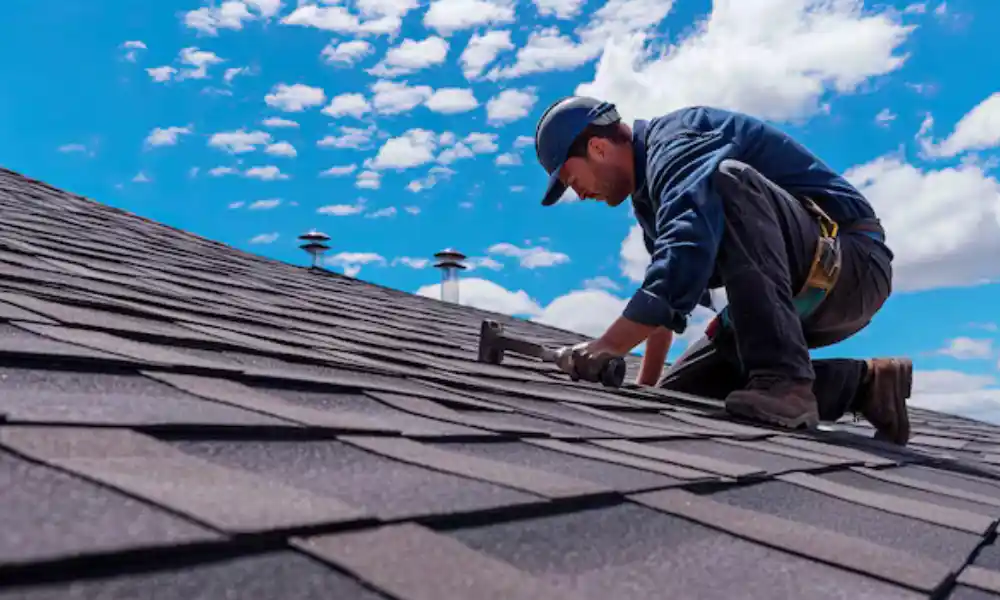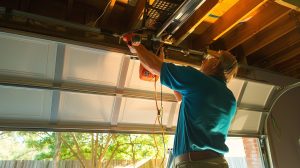
Roof Replacement 101: Signs, Solutions, And Smart Choices
Key Takeaways:
- Choose roofing materials based on durability and aesthetics; options include asphalt shingles, metal roofing, clay tiles, and slate.
- Consider eco-friendly roofing choices like recycled materials, green roofs, and solar shingles for sustainability and potential energy savings.
- Climate impacts roofing material selection; consider weather conditions in your area when choosing materials.
- Signs of roof replacement include leaks, missing shingles, and age; regular inspections can help identify these issues early.
- Know the lifespan of your roofing material; older roofs may need replacing to avoid costly repairs.
- DIY inspections are useful but should be supplemented with professional assessments for comprehensive evaluation.
- Research contractors thoroughly; check reviews, ask for recommendations, and ensure they have the proper licensing and insurance.
- Don’t be swayed by low estimates; examine quotes carefully to compare scope, quality, and reputation.
- Seasonal maintenance is key to extending roof life; clean gutters, trim trees, and monitor for damage regularly.
- Regular professional inspections help catch potential problems early, preventing future costly repairs.
- Avoid neglecting gutters, ignoring minor issues, and using improper repair materials to maintain roof integrity.
The Importance of Choosing the Right Roofing Material
Comparing Durability and Aesthetics Across Roofing Types
When it comes to roofing materials, durability and aesthetics are two of the most critical factors homeowners consider. Different roofing types—such as asphalt shingles, metal roofing, clay tiles, and slate—vary drastically in their lifespan, maintenance needs, and visual appeal. Asphalt shingles, for instance, are the most common roofing material in the U.S. due to their affordability and diverse style options, but they typically last around 15-30 years, depending on the quality and local climate. In contrast, metal roofing can last upwards of 50 years, providing not only longevity but also a sleek, modern look that can complement contemporary homes or provide a rustic finish in rural settings. Furthermore, the choice of material directly impacts insulation and energy efficiency, which can affect long-term utility costs. Therefore, a careful assessment of both durability and aesthetic preferences is crucial to ensure a roof not only protects your home but also enhances its overall value.
Eco-Friendly Roofing Options: Making a Sustainable Choice
With increasing emphasis on sustainability, eco-friendly roofing options are becoming increasingly popular among environmentally conscious homeowners. Products made from recycled materials, such as rubber shingles, not only contribute to waste reduction but often boast impressive longevity and durability. Additionally, green roofs—roofs covered with vegetation—offer superb insulation and promote biodiversity while absorbing pollutants from the air. Solar shingles are another innovative option that combines traditional roofing functions with energy generation, allowing homeowners to produce clean energy while protecting their home. Prioritizing eco-friendly materials not only supports sustainable building practices but may also provide tax incentives and reduced energy costs, making it both a responsible and economical choice in the long run.
How Climate Influences Your Material Selection
Understanding the specific climate conditions of your area is crucial when selecting roofing materials. In regions with heavy snowfall, for instance, roofs need to be designed to withstand the weight and prevent structural failure; thus, materials like metal or slate, which are resistant to snow accumulation, might be preferred. Conversely, in areas with extreme heat, asphalt shingles may deteriorate quickly, making cool roofing materials, which reflect solar energy, a more viable option. Coastal areas facing saltwater exposure would benefit from corrosion-resistant metals. Therefore, it’s essential to factor in not only the local weather patterns but also the climate’s seasonal variation to ensure the longevity of the roof while maintaining energy efficiency throughout the year.
Spotting the Signs You Need a Roof Replacement
From Leaks to Lost Shingles: When to Take Action
Recognizing when it’s time for a roof replacement is vital for homeowners to maintain the integrity of their property. One of the most apparent indicators is the presence of leaks inside your home, which can manifest as water stains on ceilings and walls. If you notice water pooling in your attic after a rainfall, it’s time to seek professional help. Additionally, lost or damaged shingles can expose the underlayment to the elements, leading to significant damage over time. Shingles curling or buckling indicate deterioration, typically resulting from age or improper installation. Inspecting your roof regularly, particularly after severe weather events, can help catch these signs early, allowing for timely intervention before more extensive damage occurs.
The Impact of Age: Is It Time to Consider a Change?
The age of your roof plays a crucial role in determining whether it needs replacement. Most roofing materials come with a lifespan estimate, but various factors can accelerate decline. For example, while asphalt shingles last 15-30 years, other materials, like slate or metal, can last well over 50 years with proper maintenance. As roofs approach the end of their estimated lifespan, they become more susceptible to leaks and other issues. Homeowners should be vigilant about the condition of older roofs, as making repairs on a roof that is beyond its lifespan may lead to more costs than investing in a complete replacement. Regular professional inspections can provide crucial insights into the state of your roof and help you make informed decisions about replacement before minor issues escalate.
DIY Inspections vs. Professional Assessments: What You Should Know
While DIY inspections can provide a preliminary overview of your roof’s condition, they cannot replace the expertise of a trained professional. Homeowners can perform basic checks—such as looking for missing shingles or checking for visible leaks—but many issues are not easily observable. Professional roofers employ advanced techniques and tools to assess the state of your roof more thoroughly, identifying issues that could be hidden from the untrained eye, such as water damage in attics or structural concerns. Investing in a professional assessment not only ensures safety but also can help plan for future repairs and budget accordingly, saving homeowners time and money in the long run.
Finding Expert Roof Replacement Services: What to Look For
Trustworthiness and Reputation: How to Research Contractors
When seeking roof replacement services, it is essential to choose a trustworthy contractor. Start by gathering recommendations from friends, family, or neighbors who have recently undergone roof replacements. Online platforms such as Yelp, Angie’s List, or Google Reviews can offer insights into a contractor’s reliability and quality of work. Look for contractors who have a history in your local area, as they are more likely to understand regional building codes and climate-specific needs. Additionally, don’t hesitate to ask for references and photographs of previous work, ensuring that you hire a contractor who aligns with your expectations for quality and professionalism.
The Importance of Licensing and Insurance in Roofing
Licensing and insurance are not just formalities; they are critical components of safeguarding your investment in roof replacement. Always confirm that a contractor is licensed in your state, as this indicates that they have met specific requirements and regulations. Similarly, a valid insurance policy protects you from liability in case of accidents or property damage during the project. Reputable contractors will hesitate to work without insurance, as the risks can be substantial. By verifying these credentials, you ensure that you are working with a credible professional who prioritizes safety and reliability.
Interpreting Quotes: Not All Estimates are Created Equal
When reviewing estimates from different contractors, it’s crucial to understand that not all quotes are created equal. Some contractors may provide low estimates to win your business, only to cut corners or overlook critical elements, leading to additional costs down the line. Ensure you receive a detailed breakdown of the costs that includes materials, labor, and any additional services such as cleanup or disposal. Compare the scope of work included in each quote, focusing not only on the price but also on quality, warranties offered, and the reputation of the materials used. By performing due diligence, you can avoid unpleasant surprises and make a well-informed decision regarding roof replacement.
Maintaining Your New Roof for Longevity and Performance
Seasonal Maintenance Tips to Extend Roof Life
Once you’ve invested in a new roof, proper maintenance is crucial for maximizing its lifespan and performance. Seasonal checks are essential; in the spring and fall, ensure that gutters are clean and debris-free to prevent water backup and ice dam formation during winter. Trimming nearby trees can prevent branches from damaging shingles during storms. After heavy snowfall, it is advisable to remove accumulation safely to avoid undue stress on the roof. Keeping an eye on potential problem areas, such as flashing and seals, and addressing minor issues promptly can make all the difference in someone’s roof longevity.
The Role of Regular Inspections in Preventing Major Issues
Regular professional inspections play an integral role in roof maintenance and preserving its functionality. Hiring a trusted roofing expert for routine evaluations allows for early detection of potential problems, which can save homeowners costly repairs in the future. A professional can identify subtle signs of wear that may not be immediately obvious, such as leaks in the underlayment that could lead to mold if left unattended. Schedule inspections at least once a year, ideally after severe weather events or heavy storms to ensure your roof is performing optimally throughout each season.
Common Mistakes to Avoid When Caring for Your Roof
Caring for your roof involves specific practices that, if ignored, can lead to premature deterioration or structural failure. One major mistake homeowners make is neglecting gutters. They play a vital role in directing water away from the roof, and when clogged, can lead to water damage and roofing material decay. Additionally, ignoring minor leaks or visual damage is another common error; addressing these issues early is pivotal in preventing larger-scale problems. Lastly, using improper materials for repairs or seeking the lowest-cost options can compromise quality and performance. Instead, choose appropriate materials and hire reputable professionals to ensure that your roof remains durable and trustworthy.
FAQ
Question: How can I tell if my roof needs a replacement? – Signs include visible leaks inside the home, missing or damaged shingles, curling or buckling shingles, and the age of the roof exceeding its expected lifespan. Regular inspections can help identify these issues early.
Question: What factors affect the longevity of my roof? – Factors include the quality of materials used, local climate conditions, the steepness of the roof, and how well maintenance is performed throughout its lifespan.
Question: Are there specific certifications I should look for in a roofing contractor? – Yes, you should check if the contractor holds certifications from manufacturers of roofing materials, which indicates their expertise and may provide warranties for the installation.
Question: What should I include in a maintenance schedule for my roof? – Your schedule should include seasonal inspections, cleaning gutters, trimming overhanging branches, checking for damage after storms, and addressing any visible wear and tear promptly.
Question: How do eco-friendly roofing options impact my home? – Eco-friendly roofing options can improve energy efficiency, reduce environmental impact, and may qualify for tax incentives. They also enhance property value due to their sustainability.
Question: What is the average cost of a roof replacement? – Costs can vary widely based on material choices, home size, and location, but homeowners can expect to pay anywhere from $5,000 to $30,000 or more, depending on these factors.
Question: How long can I expect different roofing materials to last? – Asphalt shingles typically last 15-30 years, metal roofing can last 40-70 years, clay tiles around 50 years, and slate can exceed 100 years with appropriate care.
Question: Can I perform my own roof repairs, or should I hire a professional? – While small repairs may be manageable for some homeowners, it’s advisable to hire professionals for significant repairs or inspections to ensure safety and proper handling of the underlying issues.
Useful Resources
- American Society of Heating, Refrigerating and Air-Conditioning Engineers
- U.S. Environmental Protection Agency
- National Roofing Contractors Association
- U.S. Department of Energy
- Green Building Advisor
- Building Science Corporation
- International Code Council – Evaluation Services
- Roofing Contractor Magazine

